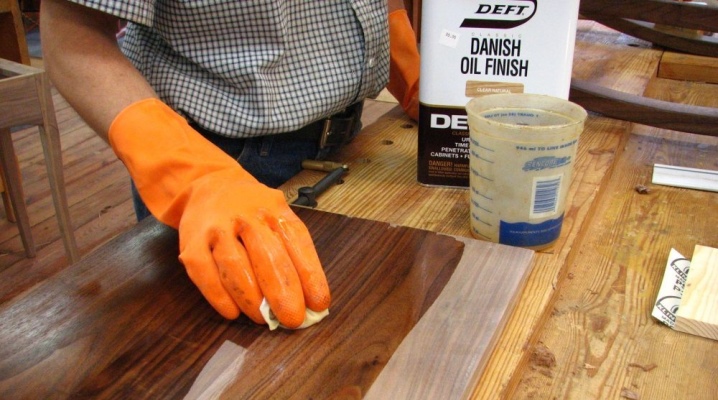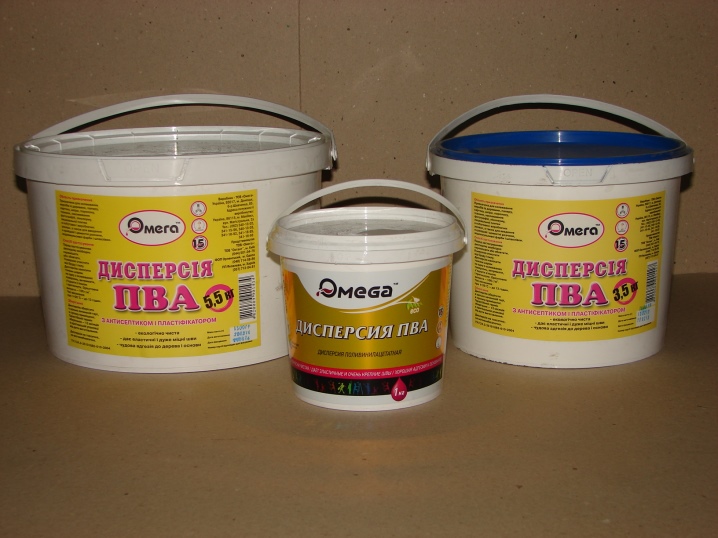How to make plywood moisture resistant at home?

Plywood is an inexpensive and popular material that is used for indoor and outdoor construction and decoration works. It is produced by multi-layer gluing of peeled veneer, removed from wood with fine shavings. Apart from the influence of adhesives, plywood can be classified as environmentally friendly.
This material poorly tolerates water... With prolonged use in wet conditions, plywood deforms and delaminates. The industry is engaged in the production of waterproof varieties, but such products are expensive and are supplied in bulk to furniture and construction industries. It is not easy to find materials with special properties on the market, but there are many ways to protect plywood yourself.... They will be discussed in our article.

Impregnation types
In construction retail outlets, you can find excellent modern compositionsused to impregnate plywood in order to acquire its waterproof characteristics. These include a number of products.
- Drying oil... It has an oily composition that penetrates deeply into the surface of the plywood and forms a water-repellent film.


- Polyvinyl acetate composition... PVA can be present in adhesives, paints or putty. The impregnation is suitable as a protective layer for preparing plywood sheets for laminate or linoleum. Polyvinyl acetate is not suitable for external protection, since it cannot cope with moisture for a long time.

- Nitro paint... It not only makes the plywood surface resistant to water, but also decorates it.


- Nitrolac... Has good water-repellent properties. It is applied in several layers after coating the plywood with linseed oil.


- Wax... If the area of the plywood is small, it can be waxed. After polishing, it takes on an attractive, impeccably smooth appearance.

Surface preparation
Before starting work on plywood to give it moisture resistance, you need to know where it will be used... When preparing sheets for use in wet rooms, processing should be done on both sides. The plywood itself must be of the FSF brand, budgetary FBA or FC in this case will not work.


If paints and varnishes are chosen for the protective layer, they must have water-repellent properties. Even in this case, they do not protect the plywood on their own, but are only used as the last, finishing layers.
Otherwise, as the paint peels off the surface over time, the plywood will begin to absorb moisture and deform.
Material that got into the house from the street should be warm for a day before starting work. To improve ventilation, the sheets are installed vertically, they should be spaced from each other at a certain distance.
Before applying the protective layer, thin The gloss is removed with sandpaper. The roughness of the surface will allow the formulations to be absorbed better. Then the ends of the sheet should be brought into a smooth state with an abrasive cloth. If there are deep defects on the plywood, they are removed with a putty. Further, the surfaces are thoroughly wiped from dust resulting from stripping.

How to soak with your own hands?
We have already seen that there are many ways to make plywood water-resistant at home, and they are all individual. That's why Let's consider the workflow with each impregnation separately.

Drying oil
This is the most accessible type of impregnation, and is also a good antiseptic. Processing a sheet of plywood with linseed oil occurs in a specific sequence.
- For work, prepare a container for drying oil and brushes, you can use a roller.
- The drying oil is well stirred and sent to a container, then heated in a water bath to a temperature of 50-60 degrees Celsius.
- All surfaces are carefully treated with the composition. Sheet ends require special diligence.
- Further, forced drying is carried out using a building hair dryer or in another convenient way.
- Only after the coating has dried can the next layer be applied. There should be as many of them as the plywood takes (until it is completely absorbed). After each treatment, another drying follows.
The sheets treated with linseed oil will be further protected from fungus and mold.
They can become base for the following decorative coatings - varnishes and paints containing drying oil.


Polyvinyl acetate composition (PVA)
Polyvinyl acetate is used in the creation of PVA glue, acrylic and water-based paints, the composition of which is the so-called oil in water. Dyes are purchased in the retail network in the form of 2 components - a paste-like paint and a plasticizer. Both products are mixed immediately before starting work. PVA glue is obtained with a homogeneous structure, without additives. All types of polyvinyl acetate compounds are suitable for covering plywood.
PVA impregnation guarantees protection of sheets from delamination and decay... In this way, the material for flooring is prepared. The surface is coated on each side, ensuring complete absorption. The ends are also carefully processed.



Self-drying is required between each layer. The whole workflow is quite lengthy and can take a whole week.
Polyvinyl acetate-based is also used putty, resembling thick sour cream in structure. Plywood is processed as follows:
- the sheet is covered layer by layer with putty until spots appear on the reverse side of the surface;
- then the other side of the plywood is well primed;
- dry the sheet in an upright position for 3 days;
- then the material is treated with an antiseptic;
- then several layers of acrylic varnish are applied.

Nitro paint
Nitroglyphthalic and nitro-enamel paints perfectly protect plywood from contact with water... But, as we already mentioned, the coloring compositions are applied to the pre-treated surface. The coating process consists of several steps.
- After leveling the surface with sandpaper, cover it with linseed oil from all sides, including the ends. The product must dry well before painting.
- The paint is diluted, turning into a liquid primer, and the dried sheet is again treated with it. After drying, the plywood will be ready for painting.
- Then 2-3 layers of paint are applied as thin as possible with intermediate drying. You can work with a brush, a roller is also suitable, but a more even coating is obtained with a spray gun.


For more thorough protection, you can glue the surface with gauze soaked in nitro solvents.
To do this, the fabric is laid by applying an initial layer of paint, the rest of the painting work is performed not only to protect the coating, but also to improve its appearance. In conclusion, the finished plywood sheet can also be varnished.

Nitrolac
Over time, the paint begins to crack and deteriorate, therefore plywood is varnished. This happens through a series of steps.
- The surface is sanded and painted over with linseed oil in several stages.
- After drying, they begin to work with varnish. For better impregnation, it is diluted to a liquid consistency and applied in 5-6 thin layers to the surface. Each coating is allowed to dry. The process does not take long, as the varnish dries quickly. You can work with a roller or spray gun.

Fiberglass
For outdoor plywood applications, the water resistance of the protective layer can be increased with fiberglass. For this, several actions are taken.
- For preparatory processing, as usual, they resort to drying oil. In addition to surfaces, one should not forget about the ends, which are the weak link of the entire protective layer. If it is violated, moisture begins to be absorbed from the ends, which leads to a gradual delamination of the key layers.
- After drying the drying oil, the plywood is covered with a layer of varnish. Choose products that do not contain epoxy resin.
- To improve adhesion to the surface, glass cloth is soaked with turpentine.
- On a slightly thickened varnish, carefully spread the material and press it tightly to the surface, leveling it from all sides.
- When the product is dry, it can be covered with several coats of varnish or waterproof paint.
Drying episodes during the entire work process should take place naturally, which will take a total of 2-3 weeks.


Wax
To cover the surface of the plywood, you will need an impregnation consisting of 2 parts: wax and a mixture of drying oil with turpentine (one part of each ingredient). Previously, the wax is melted in a water bath and combined with the rest of the mixture. The cooled composition is applied to the surface. After drying, gently polish.
Plywood - comfortable and durable material used for construction work. Various pieces of furniture can be made from it. A homemade moisture resistant layer will extend the durability of plywood sheets and expand their range of applications.


How to make a waterproof coating with your own hands, see below.













The comment was sent successfully.